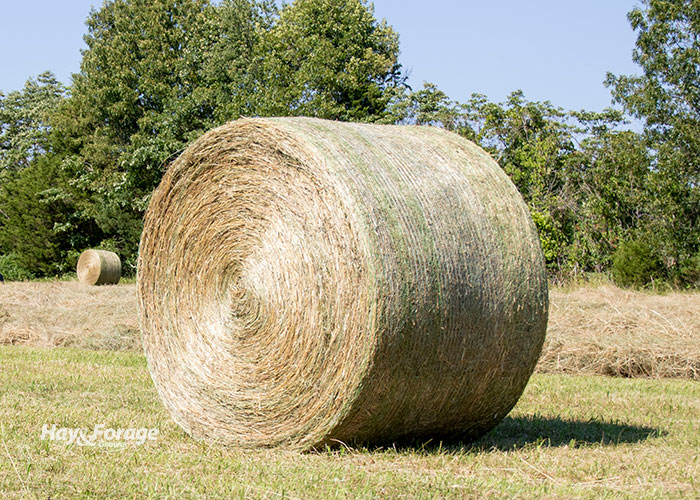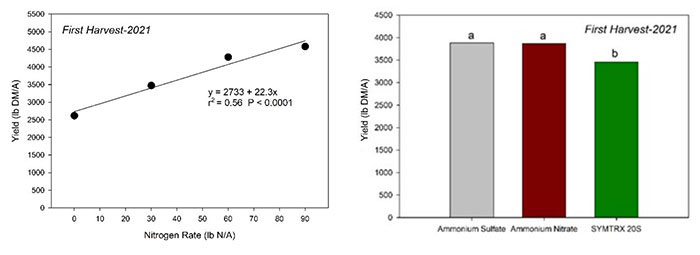Late-season nitrogen benefits tall fescue |
| By Mike Rankin, Managing Editor |
|
|
 Initial results from a University of Kentucky (UK) research trial indicates that a late-season application of nitrogen (N) on tall fescue hayfields could significantly benefit first-cutting yields in the following year. Research in the turfgrass industry and China has demonstrated that a late fall (November or December) application of N resulted in improved cool-season grass tillering and competitiveness in the spring. Forage researchers at the UK Research and Education Center near Princeton wondered if the same results could be realized with tall fescue that was previously managed for hay production. In a tall fescue hayfield, they tested three N sources (34-0-0, 21-0-0-24S, and 16-1-0-20S) applied at a rate of 0, 30, 60, or 90 pounds of N per acre. The fertilizer treatments were broadcasted on December 2, 2020. On April 1, 2021, an application of 80 pounds of N per acre was made across the entire set of fall N treatments to impose a typical spring N application for tall fescue. Immediate differences seen Weekly visual and rising plate meter measurements beginning on March 15 confirmed differences in fall N-rate treatments. Differences between N sources weren’t detected until the sixth week of measurements. Independent of the 80-pound spring N application, late-fall N applications improved dry matter yields by at least 22 pounds per pound of N applied. The researchers noted that the fall-applied N caused the grass to emerge from winter with a greater capacity to respond to favorable early spring conditions. The response slowed beyond the 60-pound N rate (see Figure 1a). Figure 1. Tall fescue dry matter yield response to: a) fertilizer N rate, and b) fertilizer N source.  Averaged across the three N sources, the 16-1-0-20S had a significantly lower dry matter yield than the other two N sources (see Figure 1b). The 60 pounds of N per acre rate of any one of the three N sources returned 20 to 25 pounds of dry matter yield per pound of N applied. This suggests that producers might have a new strategy for achieving higher cool-season grass yields in the spring when additional forage is needed. The researchers caution that although these results were both surprising and promising, they only represent a single one-year trial, and the research needs to be confirmed with further experiments. |
